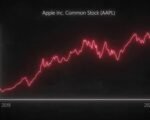Britain’s long-term borrowing costs have climbed to their highest level in 27 years, putting fresh pressure on Chancellor Rachel Reeves as she prepares the autumn budget. On September 2, 2025, the yield on 30-year UK government bonds reached 5.68 percent, driven by investor worries over rising debt and inflation.
Surge in UK Bond Yields Explained
This spike marks the highest point since 1998, when yields last topped this level amid different economic pressures. Recent market data shows the 30-year gilt yield jumped from 5.64 percent just days ago to 5.68 percent in early trading.
Investors sold off bonds, pushing prices down and yields up. This reflects growing concerns about the UK’s fiscal health, with national debt interest payments expected to hit 111.2 billion pounds this year alone.
Analysts point to several factors, including recent government reshuffles and fears of a large budget shortfall. The rise comes at a tough time, as the Labour government works to balance spending needs with economic stability.
Impact on Rachel Reeves and Labour’s Budget Plans
Rachel Reeves faces tighter fiscal room due to these higher borrowing costs. Experts estimate this could add billions to the cost of funding public services and infrastructure.
The chancellor has warned of tough choices ahead, with potential tax hikes or spending cuts needed to fill a reported 50 billion pound hole. This development echoes past market turmoil, but current data shows yields far above those during recent global lows.
Public spending now exceeds 60 percent of GDP, while revenue sits below 40 percent. Inflation hovers around 3.8 to 4 percent, double the Bank of England’s target, adding to the strain.

Higher yields mean more expensive debt servicing, which could force delays in key projects like healthcare or transport upgrades.
- Rising debt concerns: Investors fear unsustainable borrowing levels.
- Inflation pressures: Higher costs for goods and services push yields up.
- Policy uncertainty: Recent leadership changes have not calmed markets.
Market Reactions and Investor Sentiment
Stock markets felt the ripple effects, with London’s FTSE index dipping into the red on the same day. The pound also weakened against major currencies, reflecting broader unease.
Social media buzzed with criticism, as users highlighted the contrast with lower yields in other G7 nations. Posts on platforms like X noted Britain’s rates climbing faster than peers, fueling debates on Labour’s economic handling.
Bond auctions saw mixed demand, but overall, the sell-off points to doubts about long-term growth. Gold prices hit a record high over 3,500 dollars per ounce, as investors sought safe havens amid the volatility.
This trend aligns with global shifts, yet the UK stands out with its rapid yield increase.
Global Context and Comparisons
Other countries face similar issues, but not to the same degree. Germany’s 30-year yields reached a 14-year high, while France hit a 16-year peak. Still, UK’s rise outpaces these, making it a G7 outlier.
In the eurozone, inflation ticked up to 2.1 percent in August, above the ECB’s target. This could lead to steady interest rates there, contrasting with the Bank of England’s recent cut to 4 percent.
Japan, meanwhile, saw strong demand at its bond auctions, showing varied global responses to debt challenges.
| Country | 30-Year Bond Yield | Recent High Date | Change from Year Ago |
|---|---|---|---|
| UK | 5.68% | September 2025 | +1.07 points |
| Germany | Around 3.2% | Recent | +0.5 points |
| France | Around 3.5% | Recent | +0.6 points |
| US | 4.2% | August 2025 | +0.3 points |
This table highlights how UK’s yields have surged more sharply.
Experts like those from Deutsche Bank describe it as a slow vicious circle, where debt worries fuel higher yields, worsening the outlook.
Expert Views on Economic Outlook
Market strategists urge calm, noting that while challenges exist, outright default risks remain low. One analyst called much of the panic “foolish noise” that distracts from real issues like growth and infrastructure.
Ray Dalio, a prominent investor, warned of broader slides toward autocracy in places like the US, but tied it to economic strains. In the UK, focus remains on fiscal rules and potential IMF-style interventions, though most dismiss these as overblown.
Core inflation in the eurozone held at 2.3 percent, suggesting central banks will watch closely before major moves.
Logical reasoning points to a need for balanced policies. If yields keep rising, borrowing for investments could become unsustainable, yet history shows economies often rebound through targeted reforms.
What This Means for Everyday People
Higher borrowing costs trickle down to mortgages and loans, with rates expected to stay elevated longer. This could mean tougher times for families already facing wage growth slowdowns.
Businesses might delay expansions due to pricier credit, impacting jobs and the economy. On the flip side, savers could benefit from better returns on bonds and deposits.
Recent events, like the Bank of England’s rate cut amid weak growth, aim to ease some pain. Still, with debt interest rivaling education spending, priorities may shift.
Looking Ahead to the Budget
As Reeves finalizes plans, all eyes are on how she addresses this yield spike. Predictions include cautious spending and possible tax adjustments to regain market trust.
The budget, expected in the coming months, will be a defining moment for Labour. Strong measures could stabilize yields, while missteps might worsen the sell-off.
Share your thoughts on how this affects your finances, and spread the word to keep the conversation going.








